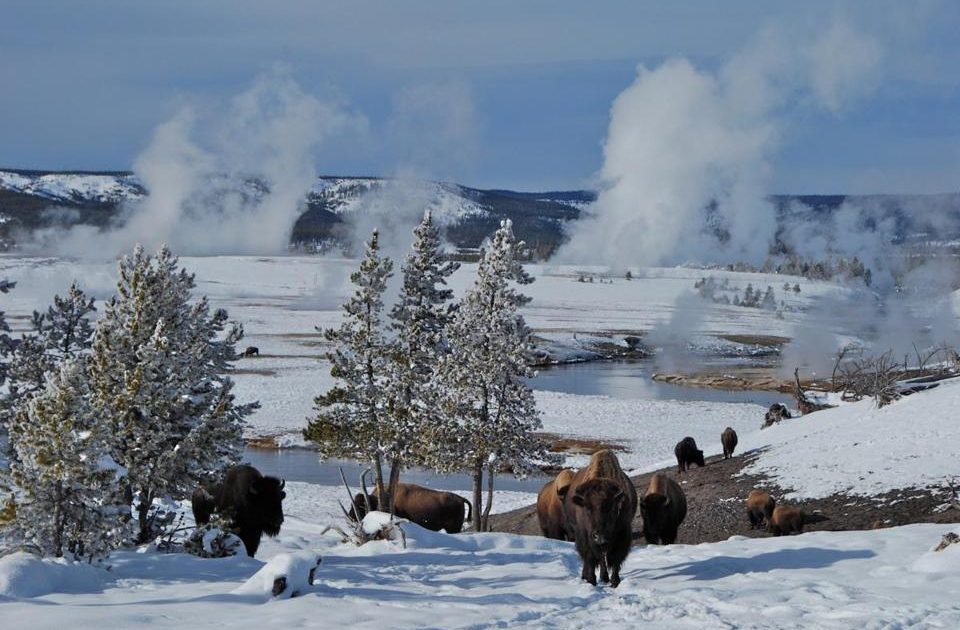Yellowstone
Winter in Yellowstone means fewer crowds, frigid temperatures, and steaming geyser basins. Skis, snowshoes, snowcoaches, and snowmobiles become the primary modes of transportation as roads close, rivers and lakes freeze, and snowstorms transform the park into a winter wonderland.
Restricted vehicle access and limited services make winter visits challenging. In a sense, coming during winter resembles visiting before the age of automobiles. People arrive at an entrance, then take a snowcoach or snowmobile (instead of a horse-drawn carriage) in order to see the park.
Every year in early November, most park roads close to regular traffic as we prepare for the winter season. The only exception is the road between Mammoth Hot Springs and the northeast entrance, which is open to regular traffic all year. Once enough snow accumulates (usually by mid-December), roads open to “oversnow” travel only. This means the only way to visit Old Faithful, the Grand Canyon of the Yellowstone, and other popular destinations during winter is by guided snowmobile or snowcoach, or through our non-commercially guided snowmobile program. Oversnow travel ends in mid-March, when our plowing crews begin clearing a winter’s worth of snow. Roads start re-opening to normal cars in mid-April.
Most stores, restaurants, campgrounds, and lodges are closed during winter. A few visitor centers remain open, and we also maintain a series of warming huts throughout the park. Ranger-led programs are offered at Old Faithful and Mammoth Hot Springs. Park partners and other businesses offer a variety of guided activities and trips during winter.






